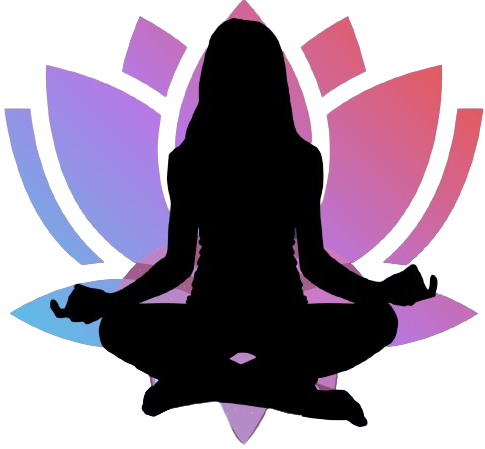
How to Use Acupressure to Alleviate Headaches and Migraines
Headaches and migraines are common issues that can disrupt daily life, causing significant discomfort and pain. While there are numerous medications and treatments available, many people seek natural and holistic approaches to manage their symptoms. One such method is acupressure, a traditional Chinese medicine technique that involves applying pressure to specific points on the body to relieve pain and improve health. In this post, I’ll guide you through how you can use acupressure to help alleviate headaches and migraines, empowering you to take control of your well-being with a natural and effective approach.
Understanding Acupressure
Acupressure is based on the same principles as acupuncture, but instead of using needles, it involves applying physical pressure to acupuncture points. These points are located along meridians, which are pathways in the body believed to carry vital energy (Qi). By stimulating these points, acupressure aims to restore balance, relieve tension, and enhance the body’s natural healing processes.
How Acupressure Can Help with Headaches and Migraines
Acupressure can be particularly effective for headaches and migraines because it targets tension, improves circulation, and promotes relaxation. By applying pressure to specific points, you can alleviate the underlying causes of your headache, such as muscle tension, stress, and poor blood flow.
Key Acupressure Points for Headaches and Migraines
There are several acupressure points that can help relieve headaches and migraines. Here are some of the most effective ones:
- LI4 (Hegu) – Large Intestine 4
-
- Location: On the back of your hand, in the webbing between your thumb and index finger.
- How to Apply Pressure: Use your thumb and index finger to press and hold this point for 1-2 minutes. You should feel a mild, achy sensation.
- Benefits: LI4 is one of the most commonly used acupressure points for headache relief. It helps alleviate tension headaches and migraines by promoting circulation and reducing pain.
- GB20 (Fengchi) – Gallbladder 20
-
- Location: At the base of your skull, in the hollow areas on either side of the spine.
- How to Apply Pressure: Use your thumbs to press gently into these hollows for 1-2 minutes. You can also use your fingertips to massage the area in a circular motion.
- Benefits: GB20 is effective for relieving headaches caused by stress and tension in the neck and shoulders. It helps relax tight muscles and improve blood flow to the head.
- Yintang – Third Eye Point
-
- Location: Between your eyebrows, in the indentation where your forehead meets the bridge of your nose.
- How to Apply Pressure: Use your index finger to apply gentle pressure to this point for 1-2 minutes. You can also massage the area in small circles.
- Benefits: Yintang is known for its calming effects and is excellent for relieving tension headaches and sinus headaches. It helps reduce stress and promote relaxation.
- BL2 (Zanzhu) – Bladder 2
-
- Location: On the inner edge of your eyebrows, just above the bridge of your nose.
- How to Apply Pressure: Use your thumbs or index fingers to press and hold these points for 1-2 minutes. You can also massage the area gently.
- Benefits: BL2 is effective for relieving frontal headaches and sinus headaches. It helps reduce eye strain and improve circulation in the forehead.
- Taiyang – Temple Points
-
- Location: In the temples, about an inch from the outer corners of your eyes.
- How to Apply Pressure: Use your index and middle fingers to press and massage these points in small circles for 1-2 minutes.
- Benefits: Taiyang points are excellent for relieving tension headaches and migraines. They help reduce stress and relax the muscles around the eyes and temples.
- GV16 (Fengfu) – Governing Vessel 16
-
- Location: Just below the base of your skull, in the hollow area where your neck meets your head.
- How to Apply Pressure: Use your thumbs to press gently into this hollow for 1-2 minutes. You can also massage the area in a circular motion.
- Benefits: GV16 is effective for relieving headaches caused by tension in the neck and upper back. It helps relax tight muscles and improve blood flow to the head.

How to Perform Acupressure
To perform acupressure, follow these steps:
- Find a Comfortable Position: Sit or lie down in a comfortable position. Ensure that you are relaxed and free from distractions.
- Locate the Acupressure Points: Use the descriptions above to locate the acupressure points on your body. You may need to use a mirror or ask someone to help you find them initially.
- Apply Pressure: Use your thumb, fingers, or knuckles to apply firm, steady pressure to each point. You should feel a mild, achy sensation, but it should not be painful.
- Hold the Pressure: Hold the pressure for 1-2 minutes while taking slow, deep breaths. Focus on relaxing and letting go of any tension.
- Massage (Optional): You can also massage the points in small, circular motions for additional relief.
- Repeat as Needed: You can repeat the process several times a day, or as needed, to manage your headache or migraine symptoms.
Tips for Effective Acupressure
- Stay Hydrated: Drink plenty of water before and after performing acupressure to help flush out toxins and improve circulation.
- Use Gentle Pressure: While you should feel some sensation, acupressure should not be painful. Use gentle, steady pressure to avoid causing discomfort.
- Be Consistent: For best results, practice acupressure regularly. Incorporate it into your daily routine to help prevent headaches and migraines.
- Combine with Other Techniques: Acupressure can be even more effective when combined with other relaxation techniques, such as deep breathing, meditation, or gentle stretching.
When to Seek Professional Help
While acupressure can be highly effective for many people, it may not work for everyone. If you experience severe or persistent headaches and migraines, it’s essential to seek professional medical advice. Chronic headaches can sometimes be a sign of an underlying health condition that requires medical treatment.
Conclusion
Acupressure is a natural, non-invasive technique that can provide significant relief from headaches and migraines. By applying pressure to specific points on your body, you can alleviate pain, reduce tension, and promote relaxation. With practice and consistency, you can incorporate acupressure into your self-care routine and enjoy the benefits of a holistic approach to managing headaches and migraines.
Remember, everyone’s body is different, and it may take some time to find the most effective acupressure points and techniques for your specific needs. Be patient, listen to your body, and make adjustments as needed. With dedication and practice, you can harness the power of acupressure to improve your well-being and enhance your quality of life.
Thank you for taking the time to learn about acupressure and how it can help alleviate headaches and migraines. I hope this guide provides you with valuable insights and practical steps to start your journey towards natural pain relief. If you have any questions or would like to share your experiences with acupressure, please feel free to leave a comment below. Happy healing!
With warmth & compassion
Shaun.

